This Salmon Fettuccine Alfredo recipe combines a homemade rich and velvety white sauce with tender, flaky salmon. The no-boil pasta method will save you so much time! The pasta cooks alongside the luscious cream sauce and from there is tossed with perfectly seasoned fish and vegetables.
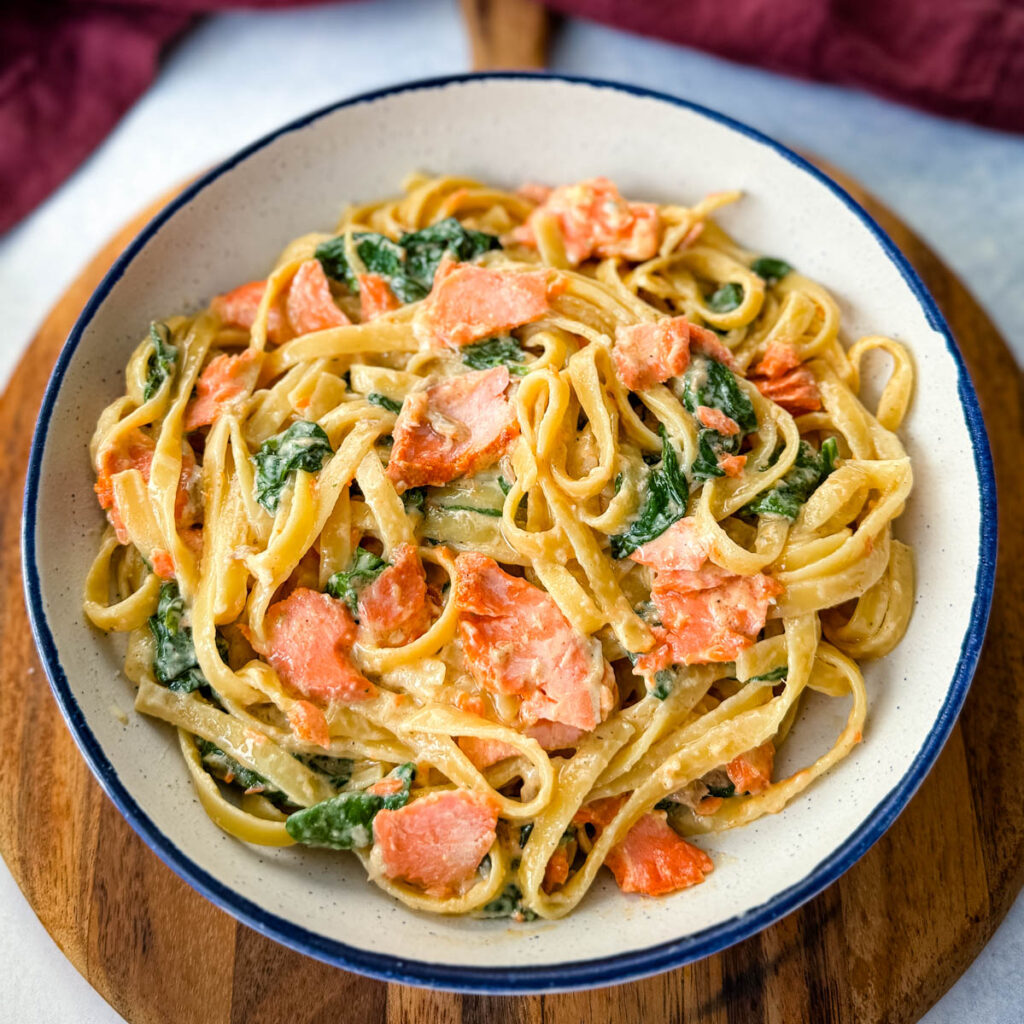
This post contains affiliate links. Please read my full disclosure here.
Why You Will Love This Recipe
- Rich and Luxurious Flavor: Salmon, with its buttery texture and mild flavor, pairs exceptionally well with the creamy richness of Alfredo sauce. The combination creates a dish that is both comforting and indulgent.
- Variation of Classic Alfredo: Adding salmon to pasta provides a delicious twist on classic pasta recipes. It introduces a new dimension of flavor and makes the dish more substantial with the addition of protein.
- Easy to Make: Despite its gourmet appeal, thanks to my no-boil pasta method, it’s relatively easy to prepare.
- Satisfying and Filling: It’s a great option for those looking for a substantial and comforting dish.
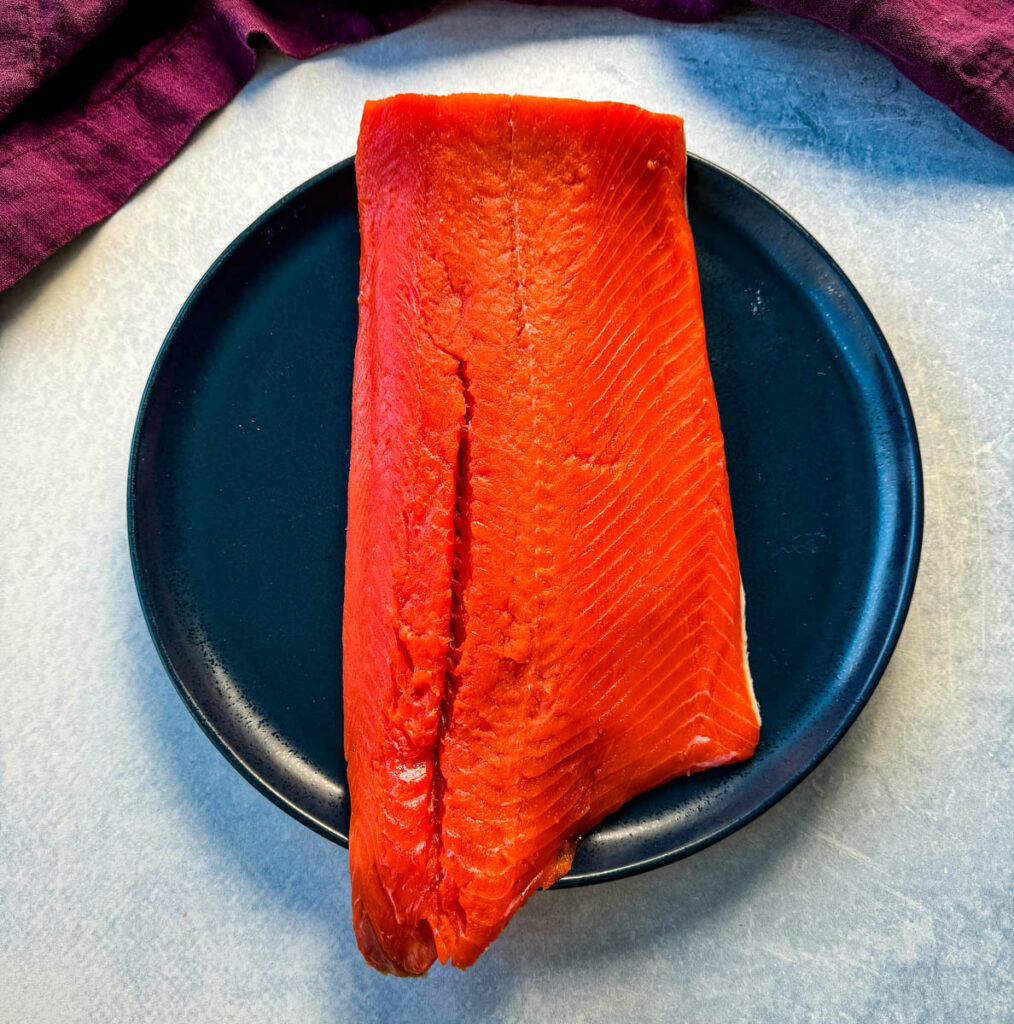
How to Cook the Salmon
You can bake, pan sear, air fry, or grill the salmon using any of my recipes:
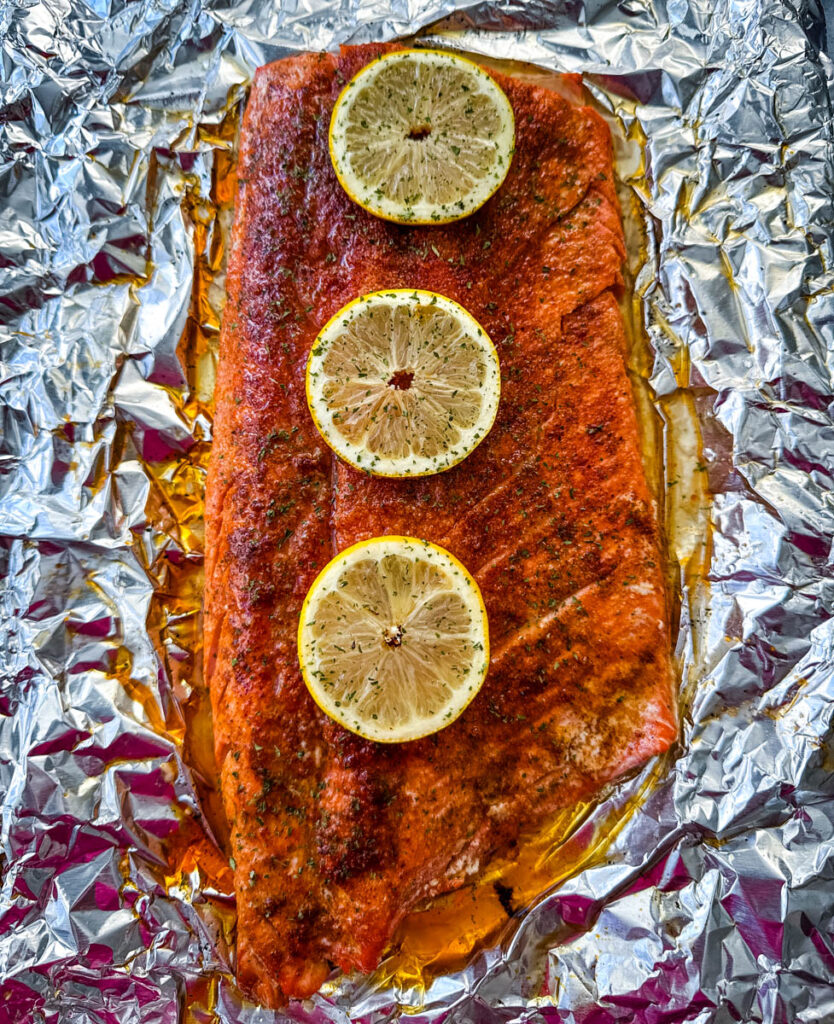
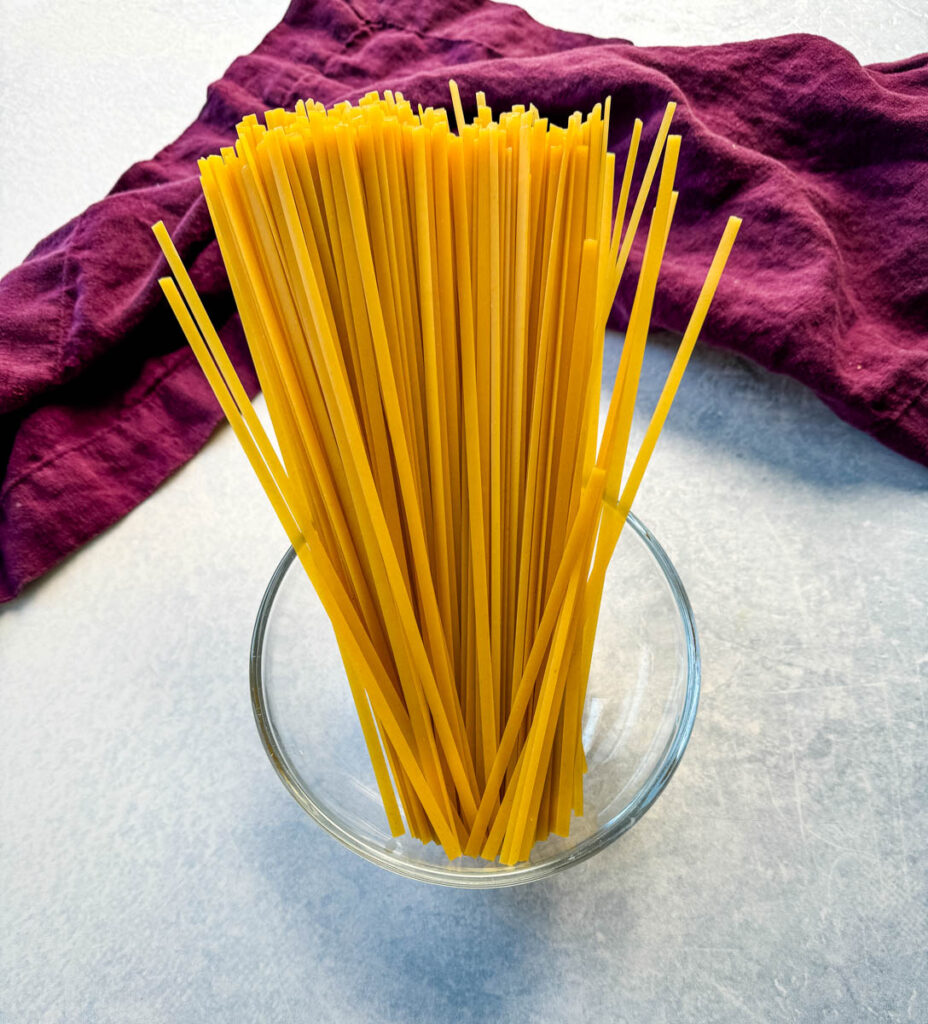
What Type of Cheese to Use
Alfredo sauce is made using Parmesan cheese. Parmesan cheese adds a rich, salty, and nutty flavor to the sauce, which complements the creamy base beautifully. You should also use freshly grated Parmesan cheese for the best flavor and texture, as opposed to pre-shredded bagged cheese.
You can use whatever type of cheese you prefer in this recipe.
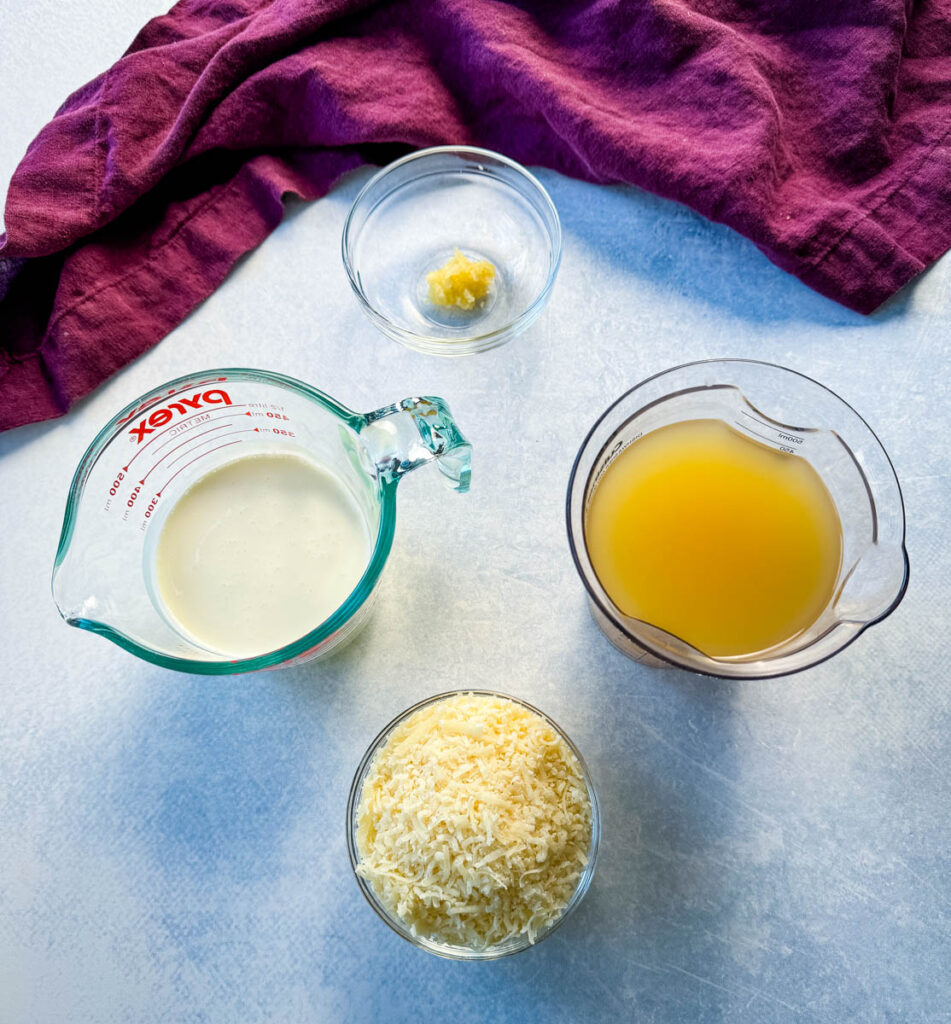
Do You Break the Pasta in Half
You don’t need to. It will shrink down as it cooks. Long strands of pasta are so much better than short ones. I wouldn’t break it.
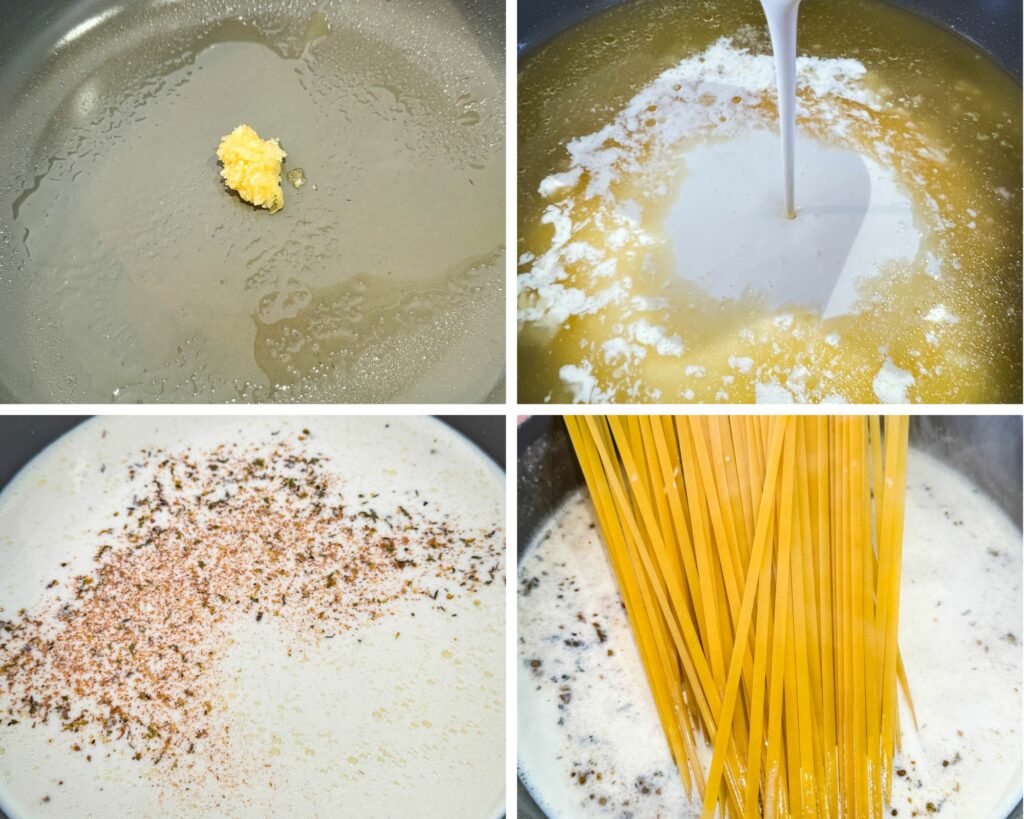
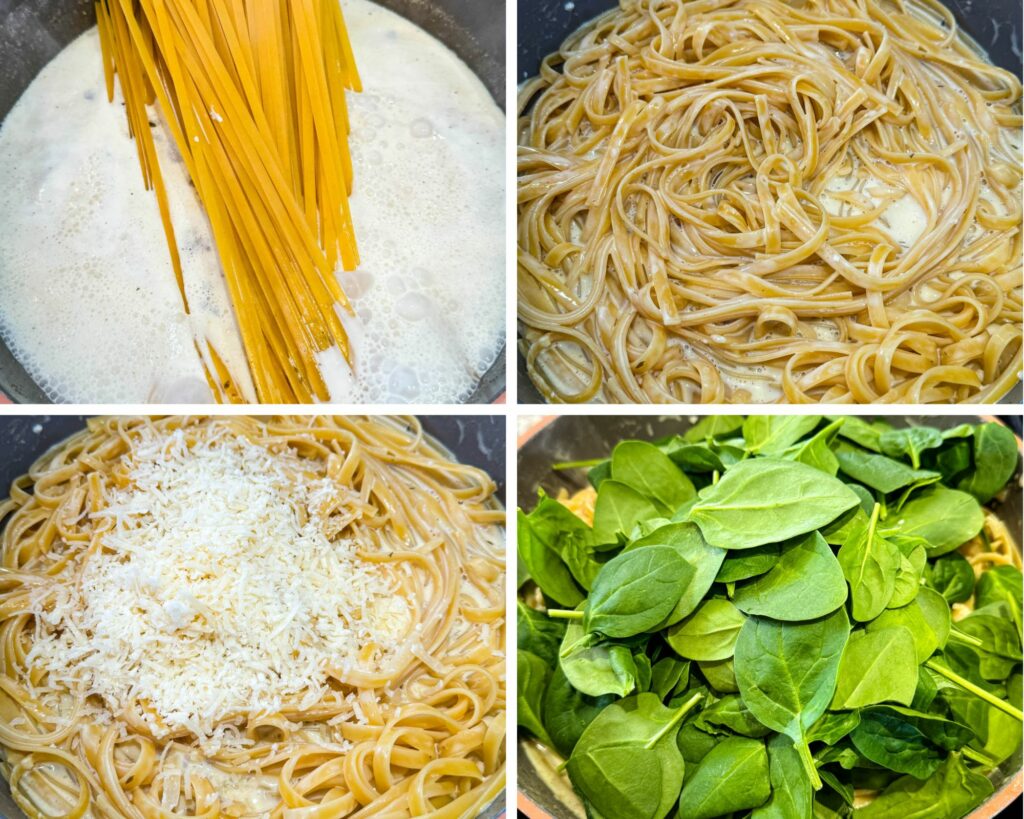
How to Make Salmon Fettuccine Alfredo
Full detailed instructions are below in the recipe card.
- Season the salmon with olive oil and spices and cook.
- Place a large skillet or pot on the stove at medium-high heat. Add the garlic and cook for 1-2 minutes or until fragrant.
- Add broth, spices, and heavy cream to the pot.
- Once the mixture begins to boil and bubble add in the pasta.
- Once the pasta has wilted and is fully covered in the sauce, adjust the heat to medium and cover the pot.
- Simmer. Sprinkle in the Parmesan cheese and optional spinach. Fold to combine.
- Add in the cooked salmon.
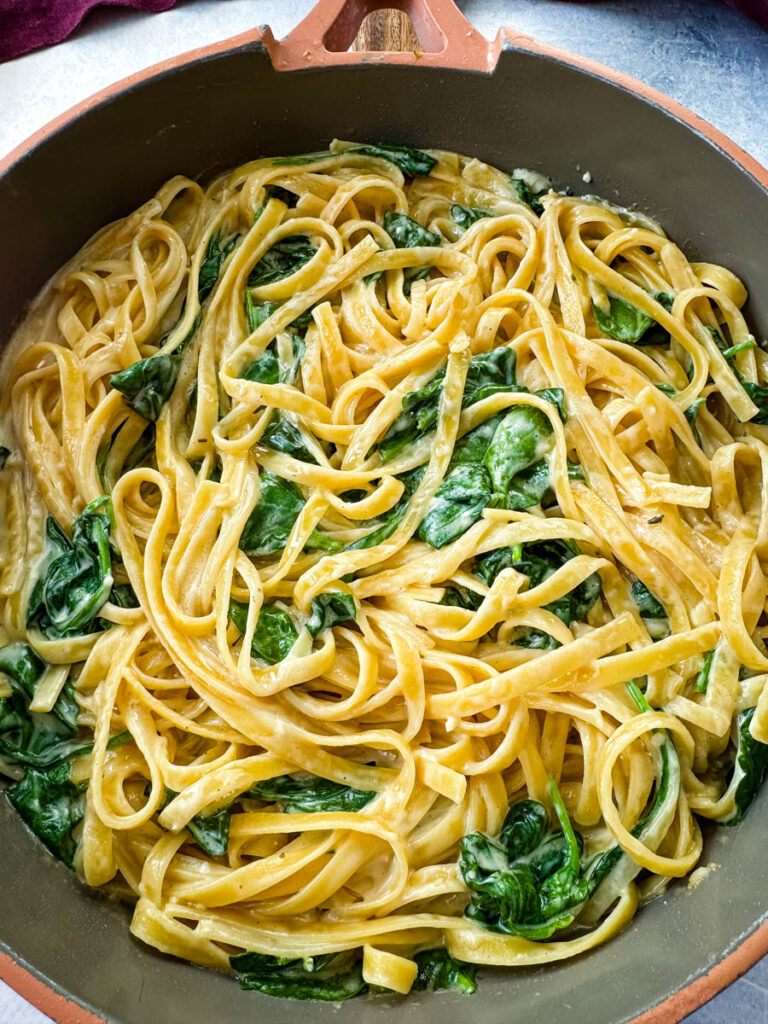
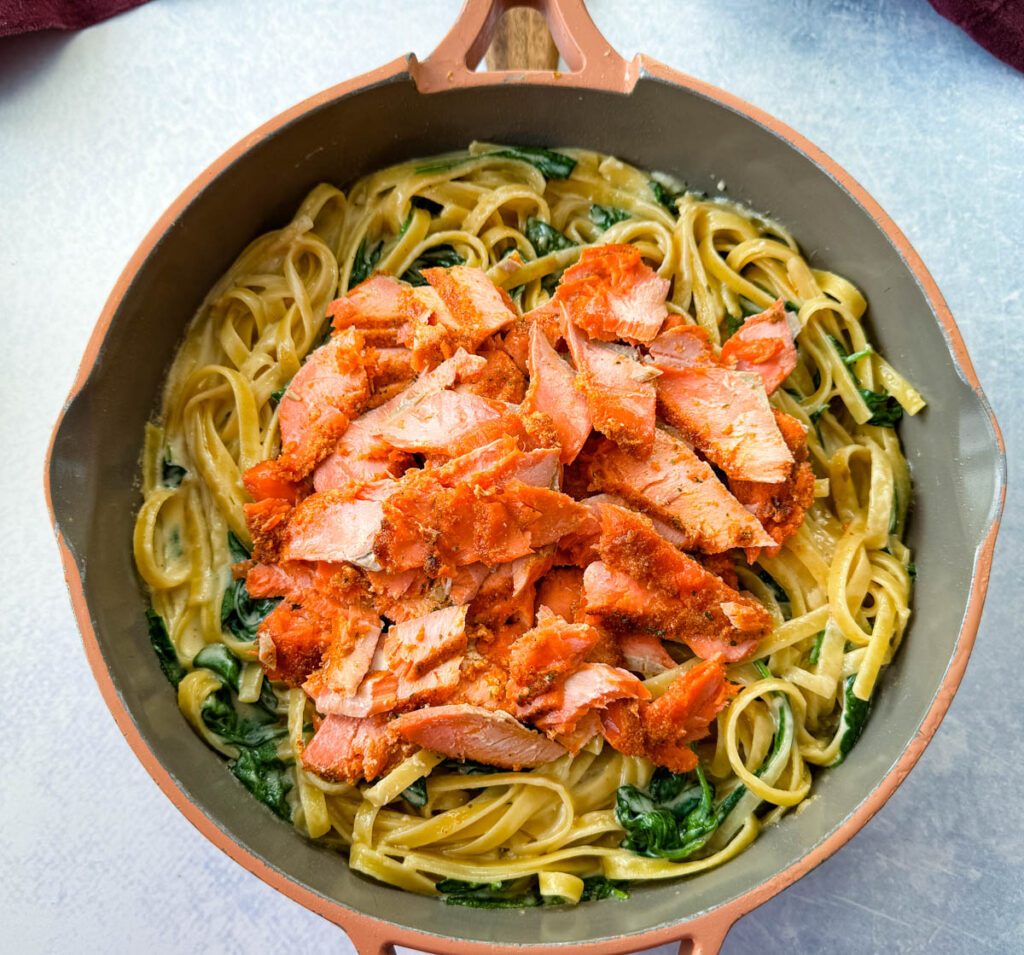
What Type of Pan or Pot to Use
You’ll want to use a large, deep skillet, a wide saucepan, a Dutch oven, or a wide-bottomed pot.
I used this pan from Amazon and this Dutch oven would work, too.
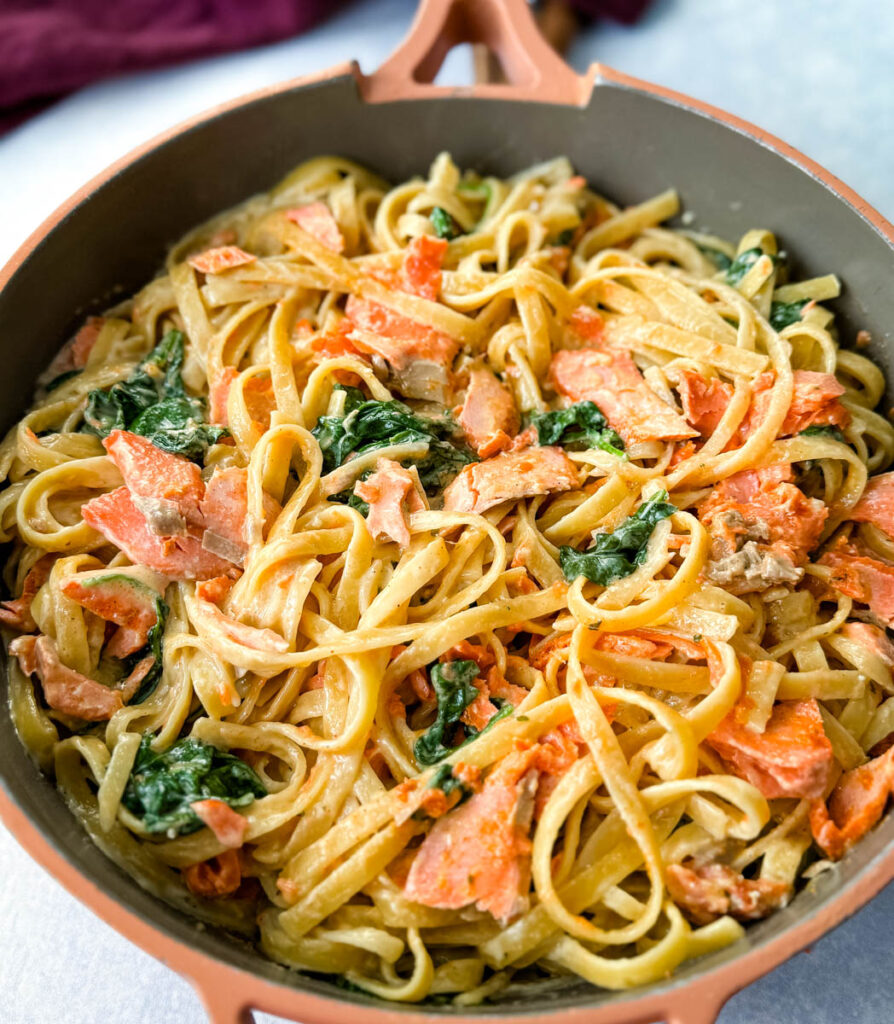
How to Tell When Salmon is Perfectly Cooked
- Temperature: Use a meat thermometer and ensure the fish has reached an internal temperature of 145 degrees. Check the temperature in the thickest part of the fish.
- Appearance and Touch: Perfectly cooked salmon will have a light pink color and will be opaque throughout. The flesh will also start to flake when pressed with a fork.
- It’s important to note that salmon can be cooked to varying degrees of doneness, some people prefer it cooked through while others prefer it medium-rare at 135 degrees. Decide what works for you.
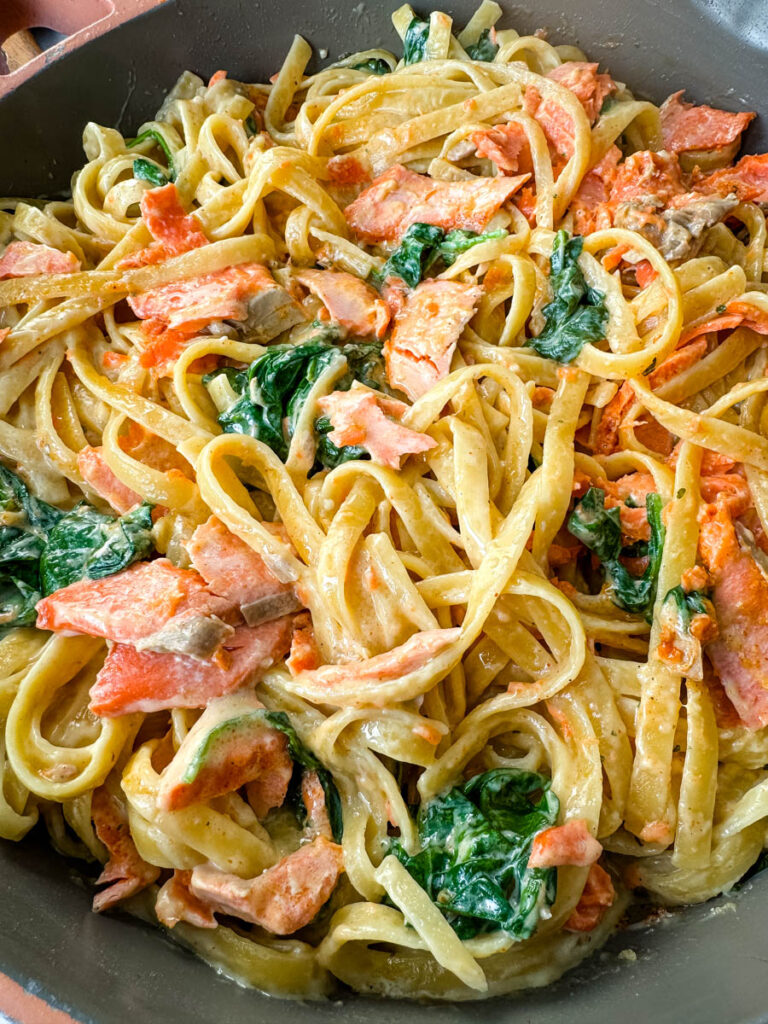
Dry and Overcooked Salmon
Overcooked salmon is dry and has little flavor. Fish (along with meat) will continue to cook when you remove it from heat. This is why it’s important to pay attention to how long the fish cooks.
When the fish is done, it will be a translucent pink in the middle. It should also look flaky. You can check out more tips on How to Tell if Salmon is Overcooked here.
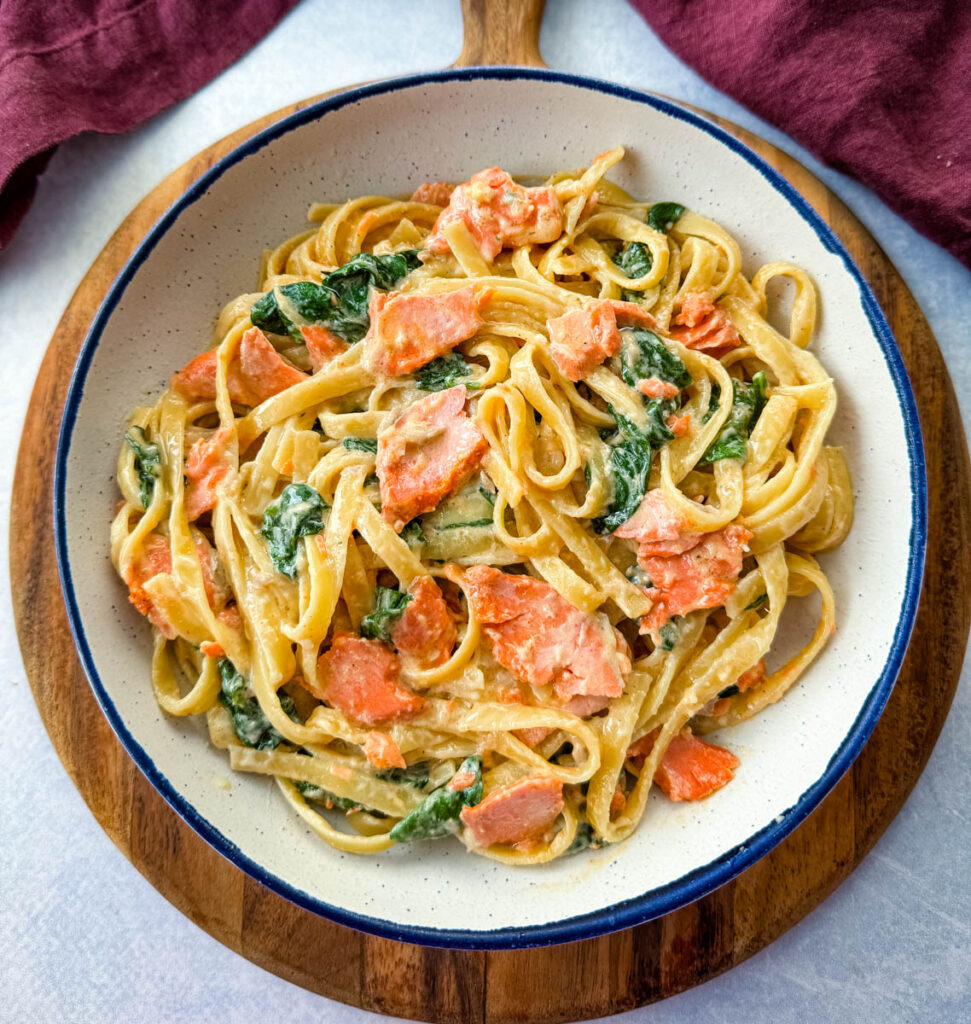
How to Keep it From Drying Out
- Use thin pasta like spaghetti if you know you like your pasta really creamy.
- Avoid overcooking the salmon. Cook it just until it flakes easily with a fork. Overcooked salmon tends to be dry and less flavorful.
- Serve the salmon pasta immediately after preparation. Pasta dishes with creamy sauces are best enjoyed fresh, as they can dry out over time. (Or use the tips below for reheating).
How to Store
Leftovers can be stored tightly covered and sealed in the fridge for 3-4 days.
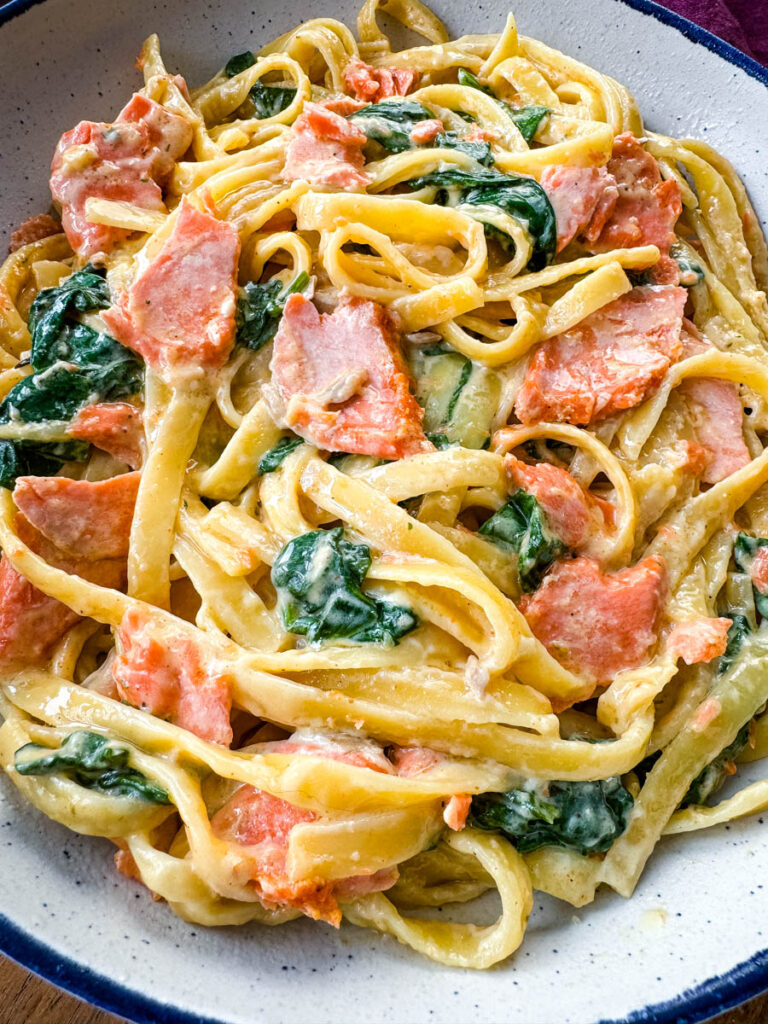
Freezer Tips
You can freeze the dish for up to a couple of months. Defrost in the fridge overnight and follow the steps above to reheat.
Pair With These Recipes
Air Fryer Garlic Bread
Fried Potatoes and Onions
Air Fryer Green Beans
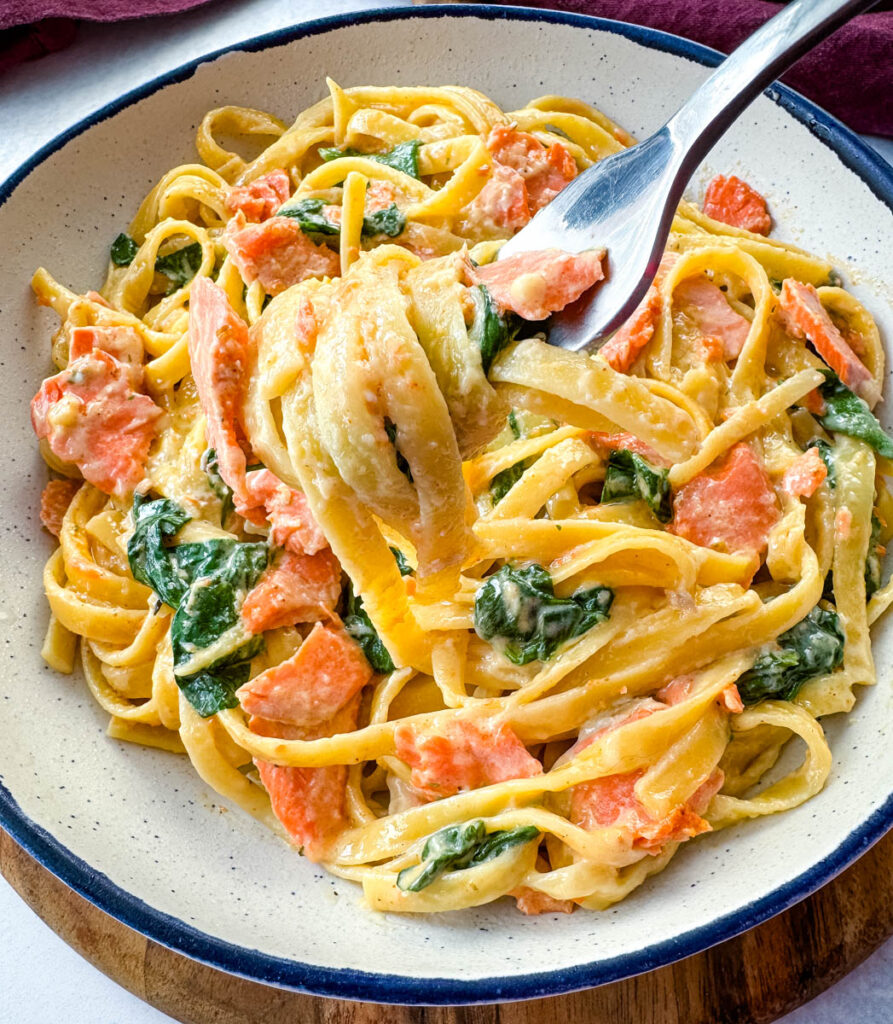
More Salmon Recipes
Salmon Rice Bowl
Easy Salmon Bites
Cajun Salmon
Air Fryer Salmon (15 Minute Recipe)
Maple Glazed Salmon
Cedar Plank Grilled Salmon
Smoked Salmon Eggs Benedict
Salmon Fried Rice with Vegetables
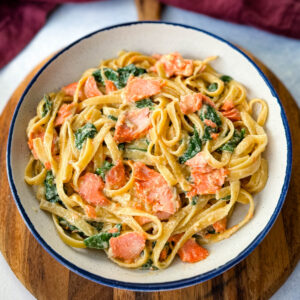
Salmon Fettuccine Alfredo
Ingredients
Salmon
- 1 teaspoon olive oil
- 1-1 1/2 pounds raw salmon
- 1/2 teaspoon garlic powder
- 1/2 teaspoon onion powder
- 1/2 teaspoon smoked paprika Regular paprika is fine.
- salt and pepper to taste
Pasta
- 3-4 garlic cloves Minced.
- 1-2 cups chicken broth
- 1 cup heavy whipping cream
- 1/2 teaspoon Italian Seasoning
- salt and pepper to taste
- 8 oz fettuccine pasta
- 1 1/2 cups grated parmesan cheese
- 2-4 cups fresh spinach Optional
Instructions
- Drizzle olive oil all over the salmon. Sprinkle the spices throughout and rub them into the salmon. Ensure the salmon is completely covered with spices and add additional if necessary.1 teaspoon olive oil, 1-1 1/2 pounds raw salmon, 1/2 teaspoon garlic powder, 1/2 teaspoon onion powder, 1/2 teaspoon smoked paprika, salt and pepper to taste
No Boil Pasta Method
- Place a large skillet or pot on the stove at medium-high heat. Add the garlic and cook for 1-2 minutes or until fragrant. Add a small amount of oil (any oil) if not using a nonstick pan.3-4 garlic cloves
- Add the broth, spices, and heavy cream to the pot. Start with 1 cup of broth. Taste the sauce repeatedly and add salt and additional spices as necessary to suit your taste.1-2 cups chicken broth, 1 cup heavy whipping cream, 1/2 teaspoon Italian Seasoning, salt and pepper to taste
- Once the mixture begins to boil and bubble add in the pasta. The pasta should wilt down without the need to break it.8 oz fettuccine pasta
- Once the pasta has wilted and is fully covered in the sauce, adjust the heat to medium and cover the pot. If the pasta isn’t completely submerged in sauce, add additional broth as needed.
- Simmer the pasta for 10-15 minutes or until the pasta is al dente. Sprinkle in the Parmesan cheese and optional spinach. Fold to combine.1 1/2 cups grated parmesan cheese, 2-4 cups fresh spinach
Air Fryer Salmon
- Spray the air fryer basket with cooking oil. Place the seasoned salmon in the air fryer basket.
- Air fry the salmon for 10-12 minutes at 370 degrees. Mine was ready right at 10 minutes. Use a meat thermometer and test that the inside of the salmon has reached 145 degrees.
Baked Salmon
- Preheat oven to 400 degrees.
- Add the seasoned salmon to a piece of foil large enough to hold the salmon and to wrap and cover it.
- Bake for 10 minutes.
- Unwrap the salmon so it is no longer fully covered. Bake for for another 2-5 minutes. Use a meat thermometer and ensure the fish has reached an internal temperature of 145 degrees. Check the temperature in the thickest part of the fish.
Pan Seared Salmon
- Place a skillet on medium-high heat with olive oil to coat and prevent sticking.
- When the pan is hot, add the seasoned salmon to the pan with the skin side up.
- Allow the salmon to cook for 4 minutes. Do not move the salmon after you have placed it in the skillet.
- Monitor the sides of the salmon to determine the perfect time to flip. When the color of the side of the salmon has lightened about 3/4ths of the way up, it’s time to flip. This usually only takes 3-4 minutes.
- Flip the salmon. I find a silicone spatula works best.
- Cook skin side down for 4 minutes.
- Remove the salmon from the pan.
Assembly
- Add the cooked salmon to the pasta and sauce. Fold to combine the ingredients.
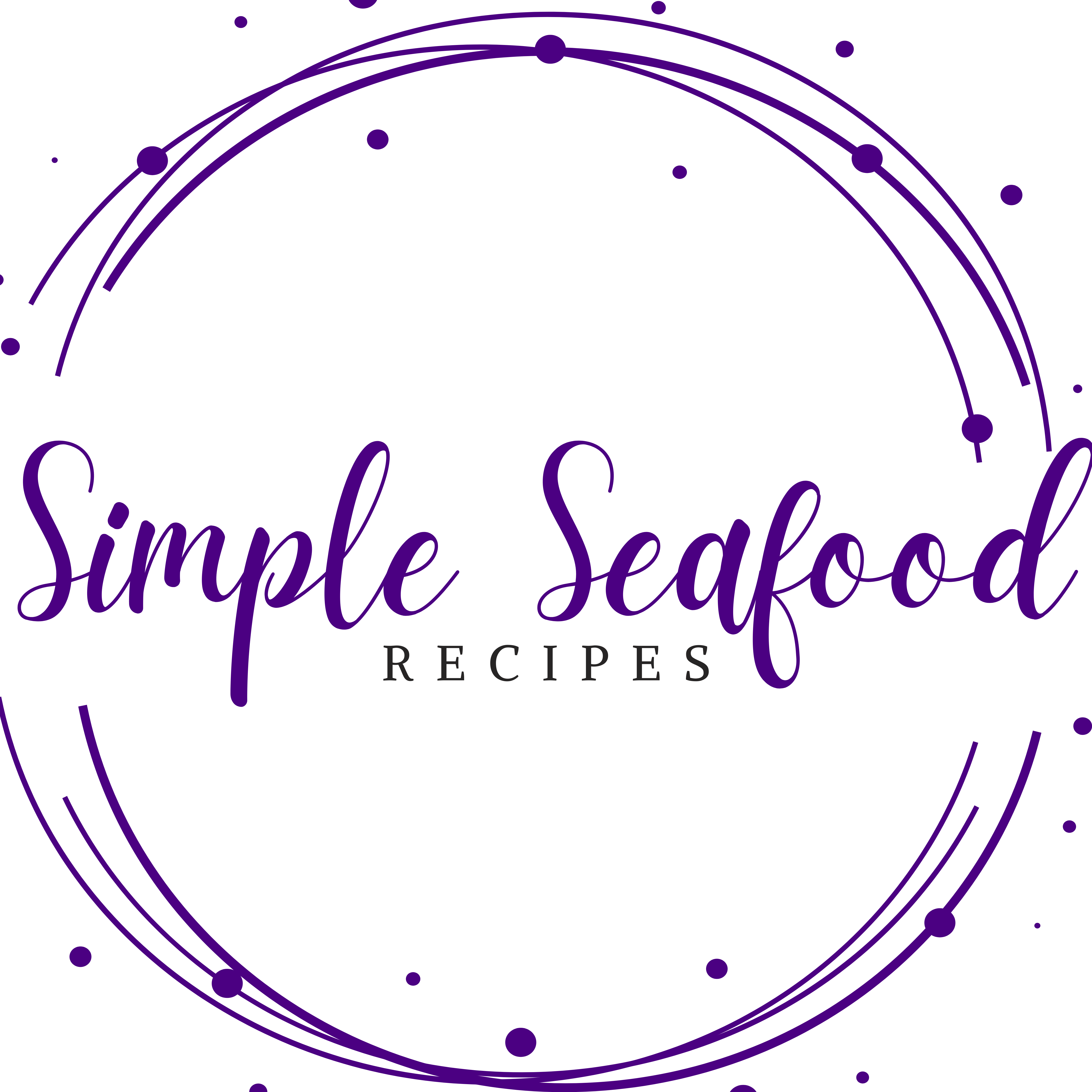
Rachel
Wednesday 19th of June 2024
Easy, quick and delicious!! A dish teenagers could make by themselves!! Thanks for sharing this recipe 🙏🏾
Monica O
Tuesday 9th of April 2024
This was so good! I air fried the salmon, and the no boil pasta method made the recipe even easier! It was nice to be able to pack this full of veggies, while still indulging in alfredo. I'll def be making this again :)
Brandi Crawford
Monday 10th of June 2024
Yay! So glad you will make it again.
A.G.
Saturday 27th of January 2024
Another one! (DJ Khaled voice) very easy to make and flavorful! FYI quality of salmon makes the difference too. Avoid farm raised, thanks for the recipe!
Brandi Crawford
Saturday 27th of January 2024
Such a great tip!
Shunta
Wednesday 17th of January 2024
SO GOOD!!! I made enough for two nights but we all kept going back for seconds and thirds so just enough left for a lunch or two. This will easily be in our rotation! Make this today!!
Brandi Crawford
Tuesday 23rd of January 2024
So glad to hear it will be in the rotation.